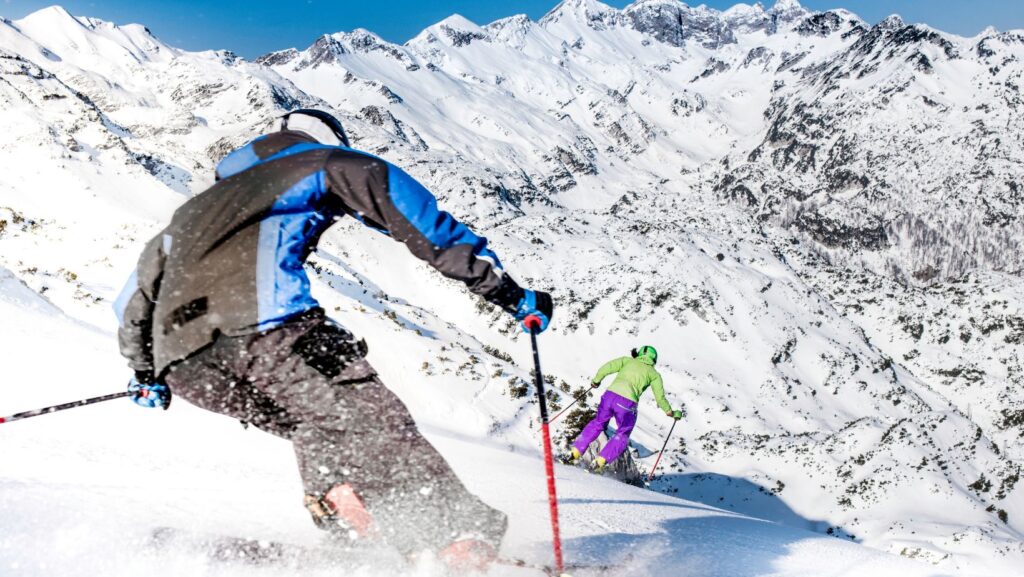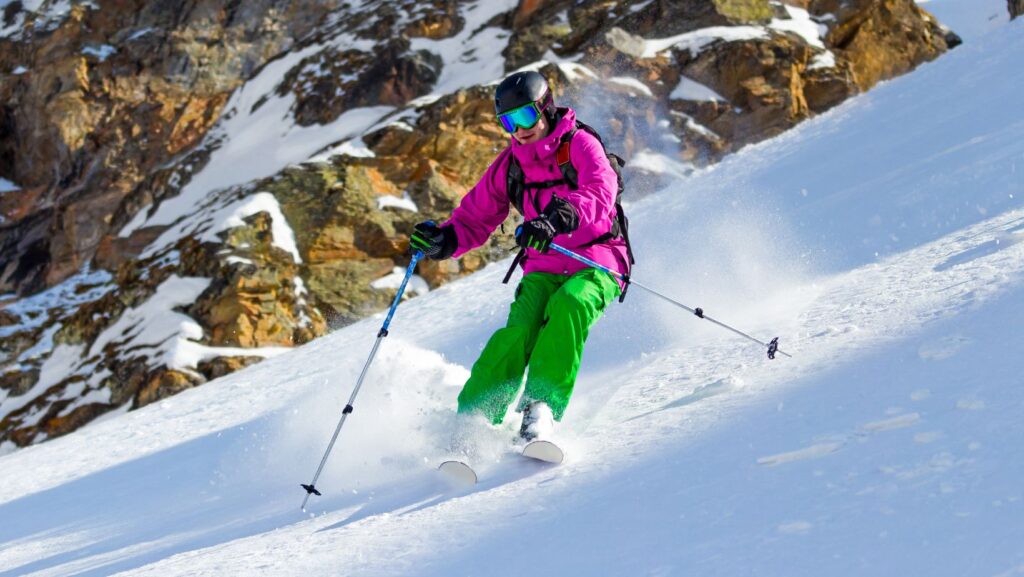The Ultimate Guide to Off-Piste Skiing in the Alps

If you’re an adventurous skier, there’s nowhere better than the Alps. However, it’s one thing to enjoy groomed runs and a completely different experience to exit the boundaries and encounter powder, difficult peaks, and a taste of freedom that fundamentally identifies what skiing can be at its Alpine best. Off-piste skiing is the ultimate adventure but requires preparation, awareness of the surroundings and an intimate knowledge of the contours of the mountains. This guide has everything you need to know about off piste skiing in the Alps with assurance and safety.
What Is Off Piste Skiing?
Off-piste skiing (also called backcountry or freeride skiing) is skiing in non-groomed terrain beyond the marked runs of a resort. Unlike pistes which feature familiar and predictable conditions and grooming, off-piste runs are less maintained, meaning skiers must navigate whatever natural snowfall occurs (or, in some cases, does not occur) depths of powder, crust, ice and varied terrain. This uncertainty is what renders the experience so exciting; every time you go off-piste, you’ll be greeted with a different yet authentic product of nature.
In the Alps, off-piste areas extend from easily accessible powder bowl fields next to marked runs to highly remote descents only accessible through ski touring or helicopter. While this sense of adventure is unparalleled, off-piste skiing requires assessment and awareness of mountains.
Why the Alps Are the Best Destination for Off Piste Skiing in the World
The Alps have everything from altitude and frequent snowfall to breathtakingly diverse terrain that boasts the best off-piste skiing in the world. From powder bowls in Chamonix and Verbier to steep couloirs in St. Anton and La Grave, there is something suitable for all types of freeriders with glacial runs, open bowls, forested runs, and technical descents offering something for everyone across the countries of the Alps.
Accessibility works in favor of the Alps, too; often in alpine resorts, there are lifts that take skiers right to powder runs with no uphill effort required! Furthermore, Europe’s impressive infrastructure allows visitors to explore countless recognized freeride hotspots on one trip; this is what makes the Alps such an ideal destination for those looking for powder and freedom.
Gear for Off Piste Adventures
Off-piste skiing requires specific gear due to safety and comfort requirements. First, in addition to typical skis and ski poles, skiers need avalanche equipment transceivers, probes, and shovels. These three items are prerequisites every off-piste skier should have at their disposal and know how to use. Avalanche airbags are another accessory that should be worn to prevent skiers from getting buried under snow during a slide.

Skis for off-piste locations should also be wider (for flotation in powder when stuck) and touring skis allow uphill movement for those accessing off-piste areas that would not otherwise be accessible through lifts. Finally, pack layers that work for those exertion levels as they require lightweight yet warm/wicking capabilities. A well-fitted helmet and back protector are also great additional safety components to minimize injury risk on uncertain terrain.
Avalanche Awareness in Off-Piste Skiing
When it comes to off-piste skiing, avalanches are a natural phenomenon that all riders should respect. Even the most seasoned riders can fall victim to dangerous circumstances when they don’t respect the mountain. Before embarking on an off-piste excursion, skiers should always check the avalanche forecast to determine risk, on a scale of one to five, where snowpack stability also gives skiers insight as to whether it’s a good day to venture off-trail.
Skiers should familiarize themselves with aspects of terrain that will help or hinder their plans, including slope angles (especially over 30 degrees), wind loading, and recent snowfall. Most ski resorts with alpine trails host classes on avalanche awareness and preparedness that teach basic skills such as transceiver usage, recognizing signs of danger, and safest routes. Although fearless riders may boast about their off-piste skills, true confidence comes from precaution.
Off-Piste Destinations in the French Alps
The French Alps are a haven for freeride culture. If there were one definitive off-piste destination, it would be Chamonix. Home to legendary descents such as the Vallée Blanche, a 20-kilometer glacier run that begins at the Aiguille du Midi Chamonix offers stunning views and exhilarating skiing with an air of mountaineering.
For the more adventurous types, La Grave is a bit more wild and raw with no groomed paths in sight. La Grave features no paths or ski patrol; instead, there’s a cable car that drops riders into steep faces and lengthy couloirs. For those looking for something a little more accessible, however, Les Arcs and La Plagne offer ample off-piste adventures just moments from the main resort areas, where fresh snowfall usually secures quality powder in close proximity.
Off-Piste Experiences in the Swiss Alps
The Swiss Alps have some of the most beautiful backcountry skiing in the world. Verbier is part of the extensive 4 Vallées ski area and is a freerider’s dream come true with everything from powder bowls to edgy chutes. It’s no wonder this ski area is also home to the final of the Freeride World Tour, an elite international event.
Zermatt is another Swiss treasure, known for high elevation and wondrous descents that overlook the Matterhorn, home to everything from gentle glacier trails to long valley runs down into Italy. The Andermatt ski area boasts a more remote option for backcountry skiing with long seasons boasting deep powder and few crowds, the perfect backcountry experience while still accessible to civilization.
Austria’s Freeride Hotspots in the Alps
Austria offers a combination of easy access and authentic alpine appeal. St. Anton am Arlberg is one of Europe’s largest freeride resorts, known for challenging terrain and deep snow every other winter. For advanced skiers, the Valluga area includes steep, technical lines to foreign. Next door in Lech, the off-piste areas are less steep and more gentle, making them the perfect freeride addition for advanced beginners or intermediates in need of a little more depth before they go fully off-piste.
In Tirol, Obergurgl and Kühtai boast high-altitude powder fields that keep snow much later in the season. And with Austria’s highly touted après-ski, it’s a perfect way to combine social culture on freeride adventures. After big days of carving your own track, you can settle down in charming mountain huts filled with delicious food and warm drinks.
Italy’s Best Off-Piste Areas
The Italian Alps are often underrated but provide off-piste gems that are less traveled. Courmayeur lies on the side of Mont Blanc and features breathtaking views with a more lowkey atmosphere. Freeride zones can be reached directly from lifts and local mountain guides can take adventurous skiers around glacial views where lines developed by nature reign supreme.
Further south is Livigno, known for big bowls and playful off-piste runs that get skiers to progress as riders. Snow remains powdery due to altitude and chilliness. In Cervinia, the option to cross into Zermatt presents international freeride trajectories under the Eye of the Matterhorn. Off-piste skiing in Italy is as much about cultured experience as it is about the snow with delicious food and friendly people awaiting at the end of an adventurous day instead of crowded tracks.
Safety is a Priority – the Mountains Guide’s Expertise
Even expert, off-piste skiers still benefit from hiring a certified guide. Mountain guides are experts of the terrain and know where to go for the best snow and where to avoid entrances before storms. They consistently keep on top of weather patterns, snowpack maturation and avalanche reports so their input is critical for safe skiing added enjoyment.
Within many alpine resorts, guides are offered privately or as groups. Not only do they guide people on safe access routes, but they teach people how to read mountains, manage risks, and up their technical skills while on unknown terrain. Getting a guide is like taking off the burden of navigating and safe skiing so you can enjoy what’s in front of you.
Get Fit to Freeride
Not only does off-piste skiing require technique, but it is also physically and mentally demanding. Skiers often find themselves in environments where they must adapt to quickly changing snow patterns, steepness or sudden obstacles. Having the core and leg strength to control a fall and the balance to keep going is essential. Skiers must also possess the cardiovascular stamina needed to keep moving in case any exertion should require a longer route back up.
To avoid skiing challenges, a mentally prepared skier will also make the best of conditions. Many terrain-unprepared people have their pride challenged by off-piste conditions. Off-piste skiing challenges one’s ability to recognize variances and adjust breathing and expectations appropriately as they carve their way through the wilderness. Skiers often practice in backcountry powder zones to develop confidence before tackling the more unpredictable terrain.
Respect Mother Nature
Off-piste skiing relies heavily on a respectful relationship with the environment. In many remote parts of the mountain where off-piste skiing occurs, there are delicate ecosystems or protected plants and animals that could easily be disrupted if travelers don’t know where they’re going. Stay in bounds where marked, don’t venture into protected areas and bring everything you take with you back to the bottom.
Recently, freeriding sustainability has become a big talking point across various spots in the Alps. Many ski resorts and guides encourage sustainable travel efforts for skiers transitioning to their Chamonix, St. Anton, or Verbier destination spots at lower altitudes, encouraging trains or shared transfers instead. Find an operator who maintains standards so this natural beauty lasts for generations of skiers.
When to Off-Piste in the Alps?
In general, off-piste conditions in the Alps are at their best from January through March. During this time, snowfall is deep, and temperatures remain cold so powder stays powder. While early season is either hit or miss with pre-established conditions or new snow melting in the spring sun, towards the end of the season, snow becomes heavier making it less ideal for novice off-piste skiers.
But each region has its advantages at different points. For example, northern resorts like Verbier and St. Anton receive consistent snowfall throughout winter while areas further south like Cervinia and Courmayeur benefit from clearer skies and stabilizing weather as the season progresses. Proper monitoring of snow reports and forecasts is critical for picking the right time to go.
Preparing for Your First Off-Piste Ski Experience
When it comes to planning your first off-piste ski adventure, it requires a lot of attention to detail and a mix of excitement and caution. Private transfer from Geneva to Val Thorens ensures that you arrive comfortably and on time, ready to explore some of the best freeride terrain in the Alps without the hassle of public transport. For your first trip, you’ll want to book an all-inclusive resort where off-piste and freeride skiing is safe and easily accessible Verbier, La Plagne, or even Courmayeur are perfectly suitable for those who want to branch out from groomed slopes down into powder. When looking to book, aim for accommodations near relevant ski lifts or the offices that facilitate guiding to avoid any early morning commutes.
Research snow conditions, avalanche tendencies, and weather before you go. If you’re an absolute beginner in the backcountry realm, it might pay off to join a guided group or a freeride course. These courses delve into avalanche precautions, mapping out effective lines and practicing rescues; therefore, it’s helpful to know what you’re getting into beforehand. Gear must either be rented or purchased (transceiver, probe, shovel and avalanche airbag) upon arrival. Finally, avoid schedules once you’re up the mountain. The best plans are not time-related but based on circumstances safety first which will ensure your first freeride trip is as legendary as it is safe.
The Conclusion The Final Experience of Off-Piste Skiing
Off-piste skiing in the Alps should be one of those experiences that mark freedom, respect and intriguing awareness between humanity and nature. Every turn, drop and line comes with a memory etched in untouched powder and crunched potential. Sometimes all you can hear is the wind because everything else has fallen to the mountainside; it’s like nature itself is reminding you that where the boundaries stop, the best experiences begin.
From dropping into the Vallée Blanche in Chamonix to exploring hidden valleys elsewhere in the Italian parts of the Alps, endless discoveries await anyone who seeks them beyond the marked pathways. A little preparation goes a long way, but with the right intentions, off-piste skiing will become more than just exhilarating but transformational, too.

 Is 48Ft3Ajx Harmful? What You Need to Know
Is 48Ft3Ajx Harmful? What You Need to Know  Htsicret: Understanding Its Significance
Htsicret: Understanding Its Significance  Is Vallpo523.zvc5.0o Good For Skin?
Is Vallpo523.zvc5.0o Good For Skin?  The Importance of Effective Infotainment Solutions for Safety and Navigation
The Importance of Effective Infotainment Solutions for Safety and Navigation  Progression Guide for Successful Clash Royale Boosting for Beginners Who Want to Develop Their Account Faster
Progression Guide for Successful Clash Royale Boosting for Beginners Who Want to Develop Their Account Faster  Is Your Smartphone Ready for Crypto? 5 Real Tips for Ethereum Users in Malaysia
Is Your Smartphone Ready for Crypto? 5 Real Tips for Ethereum Users in Malaysia